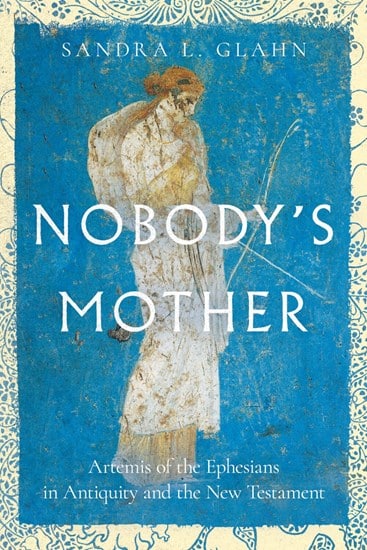Links between Paul, Artemis, Ephesus, and 1 Timothy

Article 4 of 5

SandraGlahn.com – Making Research Accessible
(See Dr Glahn’s new book, Nobody’s Mother: Artemis of the Ephesians in Antiquity and the New Testament)
This article is part of the series Pursuing Partnership: Men and Women in Ministry.
Many have undertaken to explain how understanding the identity of Artemis, the goddess of midwifery in first-century Ephesus, can shed light on the apostle Paul’s instructions about being saved through childbearing (or childbirth, or the childbearing) (2:15), but fewer have explained how understanding first-century Artemis and her cult helps provide a context for the entire section of 1 Timothy 2 when the apostle talks to his protégé Timothy about women (or wives) in the church.
Paul is addressing a local problem, but his application is often universalized. Yet the problem was specific with broad ramifications, as is always true of Scripture.
In his instructions to these wives or women (Koine has only one word that encompasses both, so we must do some interpretation to determine which he means), the author of 1 Timothy begins, “I do not allow a gune (γυνή) (2:12)…. In saying, “I do not allow,” he uses the present tense, which in Koine Greek has more of a sense of progressive action than in English. So the first-century Koine-speaking person would probably have heard this phrase as, “I am not allowing.” Such a progressive statement carries the idea that “disallowing” is the author’s practice, perhaps always, but perhaps only for a limited audience and/or duration. This grammatical detail in itself is not necessarily significant.
What makes the present tense stand out more than it might otherwise is Paul’s combination of the present tense with his first-person point of view. It’s not that one must not allow, or that women should never be allowed. But rather, he says, “I am not allowing….” And he says this in a personal letter, not an epistle addressed to an assembly. The apostle states what he himself is not doing as he gives his protégé directions in his task of charging certain people in Ephesus to stop teaching false doctrine (1:3).
Again, rather than saying, “A woman (or wife) must not teach,” he says, “I am not allowing a woman (or wife) to teach.” The apostle uses similar limited-context first-person language elsewhere when he refers to the marital status of virgins and widows in Corinth. In that context he counsels Corinthian women to stay single (1 Cor. 7:25–40), which is quite different from the counsel he offers Timothy about Ephesian widows (i.e., “I want them to marry,” 1 Tim. 5:14). In his instructions to the Corinthians, he states outright that he is not giving a universal directive: “Now concerning virgins I have no command of the Lord, but I give an opinion as one who by the mercy of the Lord is trustworthy” (1 Cor. 7:25).
Regardless of whether the author’s practice transcended time and culture or was temporary, both husbands and wives in the assembly at Ephesus needed to stop doing something disruptive. Husbands were angry during prayer, and apparently wives were being disruptive in learning settings.
One might also see an Artemis influence in Paul’s reference to limiting women’s or wives’ teaching. He gives this reason for the restriction that he says is his practice: “For Adam was formed first, then Eve” (v. 13). To Jewish people, the Adam-and-Eve narrative was the old, familiar creation story. But for Gentiles—the focus of Paul’s ministry—the Genesis narrative was new. The non-Jewish members of Timothy’s spiritual community were well versed in a far different creation story. They had a special pride of place about this story, because they believed its events—known throughout the empire—took place in or near their city. In the Artemis cult’s origin narrative, the woman came first, and her twin, Apollo, followed. In Timothy’s context the creation story from Genesis contradicts the local story and would have served as a logical corrective. To the Ephesians, woman came first and was preeminent; to Jews, the woman was not only second, but she was even deceived. This is not to suggest Eve was a prototype of females’ sin. Rather, the facts about Eve knock women back into a place of equality.
Seeing the author’s use of Genesis as a corrective to the local story’s implications rather than as an inviolate principle of firstborn preeminence allows for reading Genesis in a straightforward way. Rather than trying to find hierarchy in the creation story, readers can see in the Genesis text a stress on how “alike” the man and woman are. Adam exclaims that the woman “finally” is a creature who corresponds to him (Gen. 2:23)! This is not to diminish the beautiful difference between man and woman; it is merely to say that the Genesis text is emphasizing oneness and unity and likeness, not difference.
This article is submitted by Wendy Wilson of Missio Nexus and of Women’s Development Track. Women’s Development Track is a Missio Nexus member. Member organizations can provide content to the Missio Nexus website. See how by clicking here.

Responses